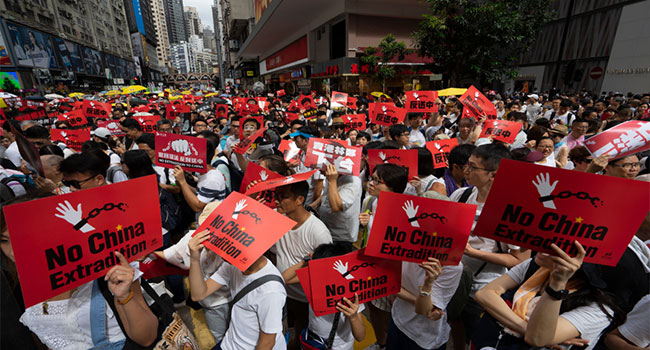
Hong Kong Protesters Take Down ‘Smart Lamps’ Amid Growing Fears of Chinese Surveillance Tech
The pro-democracy demonstrators have used several tactics to avoid being identified through facial recognition technology, including masks and laser pointers.
- By Haley Samsel
- Aug 28, 2019
As conflicts between Hong Kong protesters and police have escalated into violence in recent days, pro-democracy activists are not only fighting for universal suffrage and an end to police brutality. They are fighting to protect their identities amid fears that the Hong Kong police force, and the Chinese government that oversees it, will use facial recognition technology to find and arrest protesters.
Last Saturday, those concerns came to a head when a group of protesters targeted “smart lamps” that the local government says are used to collect data on traffic, weather and air quality. There are about 50 smart lampposts installed around the city, all of which have cameras and sensors, CNN reported.
Although the Hong Kong government maintains that the lampposts do not have facial recognition software, demonstrators attempted to tear down and dismantle some of them during a night that turned violent, with police firing tear gas cannisters at protesters. Thirty-two people were arrested for weapons possession, assault of police and unlawful assembly, according to CNN.
The activists have been vitally concerned about privacy and surveillance since protests in Hong Kong broke out in earnest in June. In the 12 weeks since, many protesters have attempted to thwart facial recognition technology regularly deployed by the Chinese government through homemade masks that obscure their faces if they are caught on camera.
Their techniques include medical and gas masks paired with goggles, which sometimes are taped over with reflective tape. Umbrellas are used to provide coverage for people who are drawing graffiti or other activities illegal in Hong Kong.
“People tend to experiment a lot in protest movements,” Gavin Grindon, an academic who curated a 2014 exhibition on objects used in protests, told CNN. “It’s often the simple solution -- the quick solution -- that’s the elegant and effective one.”
A protester told CNN that she was afraid of being arrested for crimes she did not commit if she was identified on video surveillance footage: “We need to hide ourselves so if we get caught on camera, we’re safe.”
The protesters are also attempting to hide their digital identities from authorities as well. Most organizing takes place on the app Telegram, which uses encrypted communication, and demonstrators typically use single-way subway tickets and new SIM cards rather than tying those products to their real names, CNN reported.
In recent weeks, activists have also employed laser pointers to confuse facial recognition software and fry lenses. Hong Kong authorities and opthamologists worry that the lasers could cause permanent damage to the eyes of officers and protesters.
"Pointing at eyes, the beam can cause permanent blindness; flashing at skin, it can cause burns since the energy is high. When harassing eyes, it can lead to blurry vision for a while," Chow Pak-chin, an ophthalmology specialist told CBC News.
The clashes between demonstrators and law enforcement do not seem to be on the road to de-escalation: police drew guns and used water cannons on Sunday night as activists blocked streets and others threw bricks at officers.